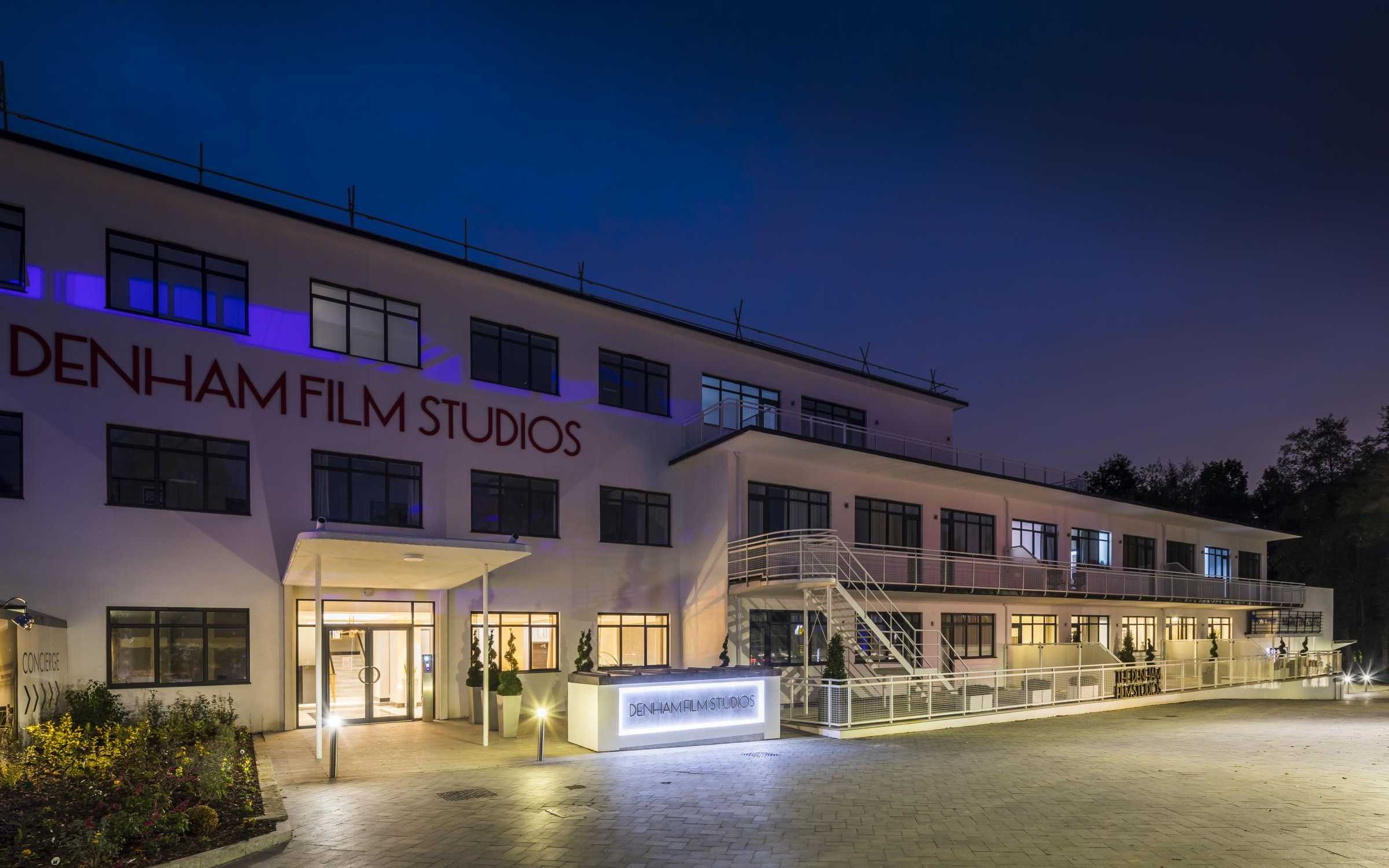The Urmet Group proudly supplies video door entry and lighting solutions for The Denham Film Studios; a £120 million development by Weston Homes, consisting of 154 apartments and 70 townhouses.
Bordering the Grade II-listed film studio building is Miles House; three new apartment buildings spread over four storeys, providing a total of 105 new homes. For a number of these apartments, specialist contractor Amwell Electrical has designed an integrated solution for Weston Homes, based around the Urmet IPerCom IP video entry system. This system combines touchscreen control for video entry, concierge call with chat facility and lighting control using the Max Pro 7” touchscreen.
The remaining apartments have been fitted with video entry devices from the Urmet range, while an Urmet IP cloud-based access control system has been installed site-wide to secure communal entrances. The townhouse plots, which were each named after iconic film directors and stars of the big screen, also feature lighting control via the Urmet Max touchscreen.
The Max Pro touchscreen is powered by Android, using apps to allow integration to other systems, such as lighting, heating, energy display and concierge services, including parcel delivery notification and amenity booking.
Centralised lighting control
Urmet Group Company, Yokis, manufactures a complete range of digital modules to create simple home automation systems. Within the apartments at The Denham Film Studios, Yokis digital radio micro modules have been installed on every switched lighting circuit. Each radio micro module has a unique address allowing secure wireless connection to each module, creating a Radio Bus and, cleverly, every radio micro module acts as a repeater to extend the signal.
Amwell Electrical, which is a fully certified Yokis Pro Installer, programmed the Radio Bus using the Yokis professional app on a tablet fitted with a Yokey USB key. This app enables the configuration of each apartment type to be saved and the configuration file can then be used to duplicate the programming for each apartment. For example, there can be a certain setting for one-bedroom apartments and another for two-bedroom apartments, thereby simplifying installation.
Yokis products are specifically designed for the professional installer and throughout the development, 1700 Yokis lighting control micro modules have been installed.
From a design perspective, Yokis micro modules are compatible with any style of retractive switch plate. This feature appealed greatly to the developer, Weston Homes, as it was able to match the light switches to other plates, such as those used for the plug sockets, contributing to the overall finish of the properties.
Intelligent lighting controls
There are a number of standard pre-sets when using Yokis micro modules in conjunction with retractive switches. Residents intuitively press once to switch the light on to the previous level used, twice for 100% light, three times for dimming to 50% and four times for the lowest dimmed level. Residents simply press and hold the switch to dim up and down through the full range, releasing the switch when the desired level is reached. There is a digital coil protection system in cases where a push-button is pressed for a prolonged length of time. Yokis micro modules are silent in their operation and a soft ‘start and stop’ function is built in for improved light perception.
Another function that can be programmed with Yokis is timing, allowing the resident to set a timer from 2 seconds to 4 hours, plus there is an option for unlimited duration.
One of the many advantages of the Yokis system is that it can be installed as part of a new-build installation without the need for any additional wiring. It also operates as a standalone system from day one, meaning that no internet connection is required as the radio micro modules connected to the switched lighting circuits and Radio Bus work independently from any touchscreen control or centralised processor.
The developer, Weston Homes, specified touchscreen control and the Max Pro touchscreen features Yokis technology inside. A built-in transmitter connects to the Yokis Radio Bus, enabling control using the embedded app. Control screens are configured using definable icons for switched lighting circuits – e.g. hall, living, kitchen, etc. A popular feature request is for an ‘all-on, all-off’ function which can also be configured. Furthermore, the resident’s key fob (the same key fob that allows access to their building) can be programmed to activate a function, such as ‘all-on’ by simply offering the key fob up to the integral key fob reader within the Max Pro touchscreen.
Video entry was not a requirement for the townhouses, yet the Urmet Max touchscreens have a doorbell input and can be linked to the property’s CCTV camera system. An option was also provided to the developer for the use of Yokis micro modules to automate the electric garage doors.
There is a Yokis Home Hub in each property linking with the Yokis YnO app, allowing residents to control their home lighting via their smartphone or tablet by simply downloading the complimentary app. Lights can be switched on and off as well as dimmed through the app, even if the resident is outside their home.
The Yokis lighting solution is also compatible with Google Home and Amazon Alexa. This provides residents with the opportunity to use voice control to further simplify and enhance their smart home, using commands such as “Alexa, set the living room lights to 20 per cent”, “Alexa, turn on the kitchen light” or “Alexa, turn off all lights”.
For further information, please visit www.urmet.co.uk
